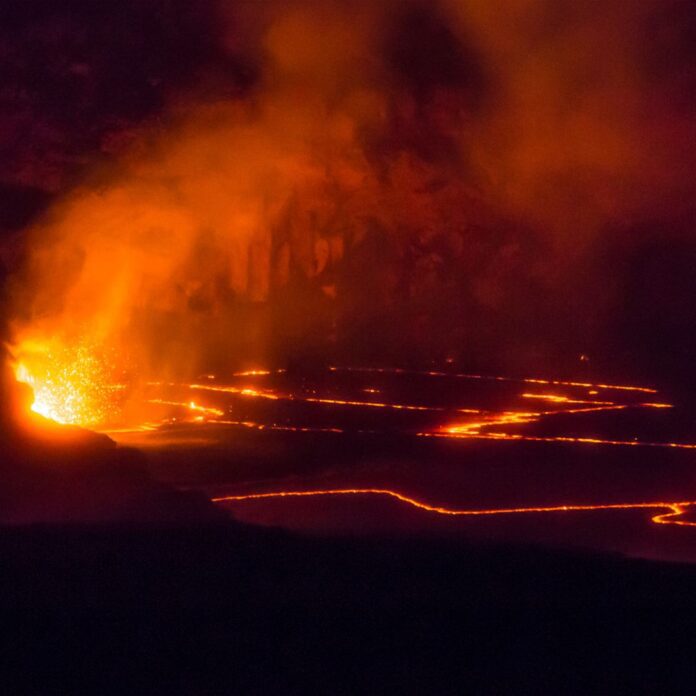Kilauea volcano on the Big Island of Hawai’i’ has resumed erupting following a short period of dormancy. This eruption signifies yet another chapter in the ongoing series for one of the globe’s most active volcanoes.
There are a lot of things to do on the Big Island but watching Kilauea erupt is one of the most unique and special. You can watch the live stream below.
Prior to its sudden resurgence, Kilauea had been notably quiet for approximately two months. This eruption was preceded by a string of escalating seismic activities on the Big Island. This led the US Geological Survey (USGS) to upgrade the alert status of Kilauea to “watch.” The USGS diligently tracks volcanic activities and consistently posts updates on its website.
Although Kilauea’s eruptions are visually stunning, they present considerable challenges for the Big Island’s inhabitants and its ecosystem. Historical eruptions have necessitated evacuations, led to the demolition of residences, and transformed the terrain. It is of utmost importance for both locals and visitors to stay informed of current conditions and comply with any instructions issued by local officials.

Tips For Viewing Kilauea Erupting
Observing the Kilauea eruption can indeed be a mesmerizing event, however, it is of utmost importance to place safety first and exhibit consideration for the natural surroundings. Here are several pieces of advice for observing the Kilauea eruption:
Remain Updated: Regularly check for the most recent updates on the eruption status and warnings from authoritative entities such as the US Geological Survey and the Hawai’i Volcanoes National Park. Links below.
Emphasize Safety: Adhere to the safety protocols stipulated by officials. Refrain from bypassing barricades or entering prohibited zones.
Select an Appropriate Location: Suggested locations for observation encompass the Hawai’i Volcanoes National Park and specified observation areas outside of the park. Consult the park’s online portal for the most current details on eruption observation.
Show Consideration for the Environment: Avoid discarding any litter and demonstrate respect for the natural and cultural heritage of the region.
Come Prepared: Pack necessities such as water, food, a torch, and a mobile phone with a full battery. Wear suitable clothing for the climate and landscape.
Dodge Large Gatherings: Aim to visit at times when there are fewer visitors to circumvent large crowds and optimize your observation experience.
Contemplate a Guided Excursion: Participating in a guided excursion can be a secure and enlightening method to witness the eruption. Investigate and opt for a trustworthy tour provider.
It is crucial to always prioritize safety and exhibit respect for the natural surroundings when observing the Kilauea eruption.

Kilauea Eruption Resources
Here are two resources for the most up-to-date information regarding the Kilauea eruption.
U.S. Geological Survey (USGS) – Kīlauea Volcano Updates: This is the primary source for the most current updates on Kilauea’s volcanic activity. The USGS provides detailed information on eruptions, including maps, photos, and eruption summaries. Visit the USGS Kīlauea Volcano Updates page here: USGS Kīlauea Volcano Updates[1].
Hawaiʻi Volcanoes National Park – Eruption Viewing: This site offers information on safe eruption viewing opportunities, as well as guidance on how to visit the Hawai’i Volcanoes National Park during an eruption. Visit the Hawaiʻi Volcanoes National Park Eruption Viewing page here: Eruption Viewing – Hawaiʻi Volcanoes National Park[2].










